
Bio-ethanol fireplace inserts
The third fuel in our guide is bio-ethanol. Eco-friendly bioethanol fireplace inserts burn liquid ethanol, a clean-burning fuel source that doesn’t generate fumes or smoke. This self-contained fireplace is becoming increasingly popular due to its convenience and efficiency. Ethanol fireplaces are easy to install and don’t require a chimney, venting system or utility connection lines. They’re also relatively inexpensive to operate. Liquid ethanol is more affordable than propane (up to 35% cheaper) without the huge upfront installation cost of natural gas.
Ventless fireplace inserts for indoor or outdoor use
Bioethanol doesn’t produce toxic fumes or smoke that need to be vented. These self-contained fireplaces can be installed inside and outside your home. Ethanol fuels like e-NRG have low odor, so you don’t have the strong smell that comes with many gas models. Add-on bio-ethanol fireplaces are smokeless. This gives you unlimited freedom to install them wherever you want on your porch or deck regardless of wind patterns. This makes them a smart alternative to wood-burning inserts in windy environments.
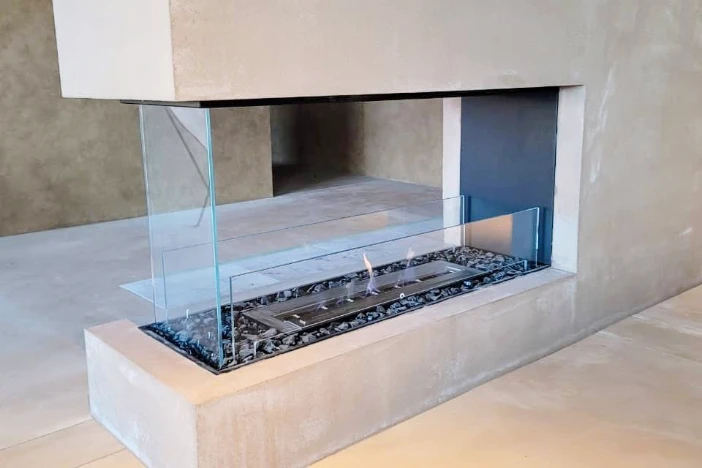
Zero clearance means construction freedom
Bio-ethanol fireplace inserts are an ideal solution when there’s no flue or chimney. They’re perfect for homes where neither gas nor wood fireplace inserts can be accommodated. Without gas lines or electrical wiring, bio-ethanol fireplace inserts are simple to install in a wall like a new window. Many models are designed with zero clearance requirements, which gives builders and architects greater flexibility. Flush-mount, peninsula, island, double-sided and other configurations add to the flexibility of some commercial-grade bio-ethanol fireplace inserts. Add decorative black glass charcoal or stones around burners for a stylish final touch.
Pleasing flames but less heat
While bioethanol has many benefits versus alternative fuels, it generates less heat when burned. Bio-ethanol fireplace inserts produce an attractive orange flame that burns at a lower temperature than wood or gas. They provide warmth on a chilly evening but don’t radiate the heat of a roaring wood bonfire or gas-fueled fireplace. Aesthetic qualities and easy installation are bigger selling points for bio-ethanol fireplace inserts than the temperature of their flames [2010 Storesund, Mai & Sesseng].
Helpful Article
Read our article Fire Pit Fuel Types – Pros & Cons for more information on wood and other fuel types for fireplace inserts.
Bio-ethanol is a heat-efficient eco-friendly fuel
Other fuels generate harmful emissions and smoke when burned but bio-ethanol releases only heat, steam and relatively low CO2. No heat is lost up a chimney, flue or other ventilation system, increasing the efficiency of this green fuel. Despite generating less heat overall than vented alternatives, bio-ethanol fireplace inserts can keep more heat in the room. Bioethanol is a renewable fuel by-product of several easily replenished plant sources. This makes it a much more sustainable energy source than fossil fuels.
Look for certified ethanol fireplaces
If you’re considering a bio-ethanol fireplace insert for your home, choose only EPA or ISO-certified models. This ensures that your unit will burn with less pollution than uncertified models. Additionally, ethanol burners should be UL-listed to guarantee they have undergone rigorous testing by Underwriters Laboratories. This organization ensures products meet the highest standards for sustainability and safety.

When bio-ethanol is best
Inserted bio-ethanol fireplaces are ideal for creating a mesmerizing ambiance and don’t need the heat of a raging bonfire. You get the glow of controllable dancing flames without odors, fumes or smoke. They can be installed indoors or outdoors and you don’t have any mess with these eco-friendly, clean-burning fireboxes.
They aren’t as enticing when the weather turns frigid and bio-ethanol fuel can be expensive compared to other options.
Additional firebox fuel options
Bio-ethanol is an underrated fuel for fireplace inserts due to its heat efficiency and absence of fumes or smoke. Another fuel option that is growing in popularity is pellets. Check out the next section of our guide to read up on this efficient fuel source.
Guide Sections
References
- Storesund, K., Mai, T. T., & Sesseng, C. (2010). Ethanol-fuelled, flue-less fireplaces-An evaluation.

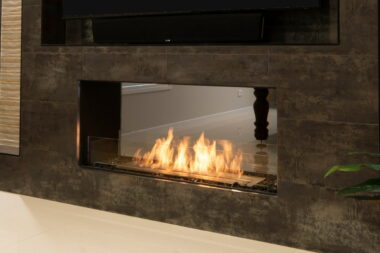
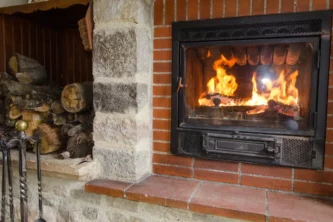


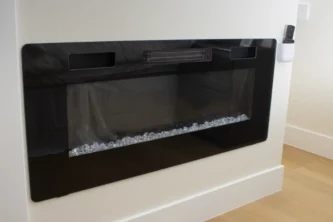
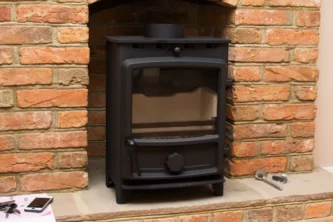




Leave a Reply